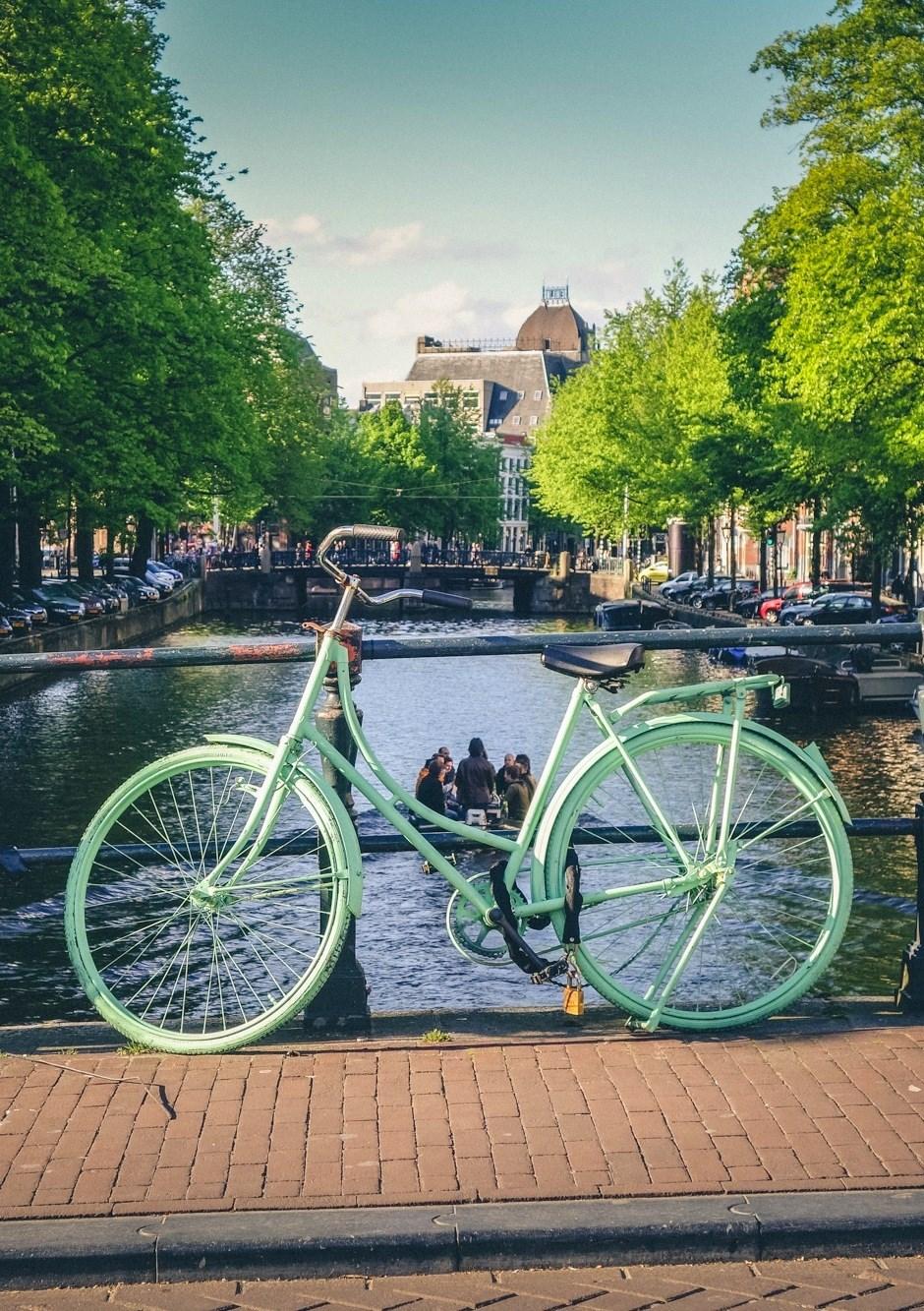
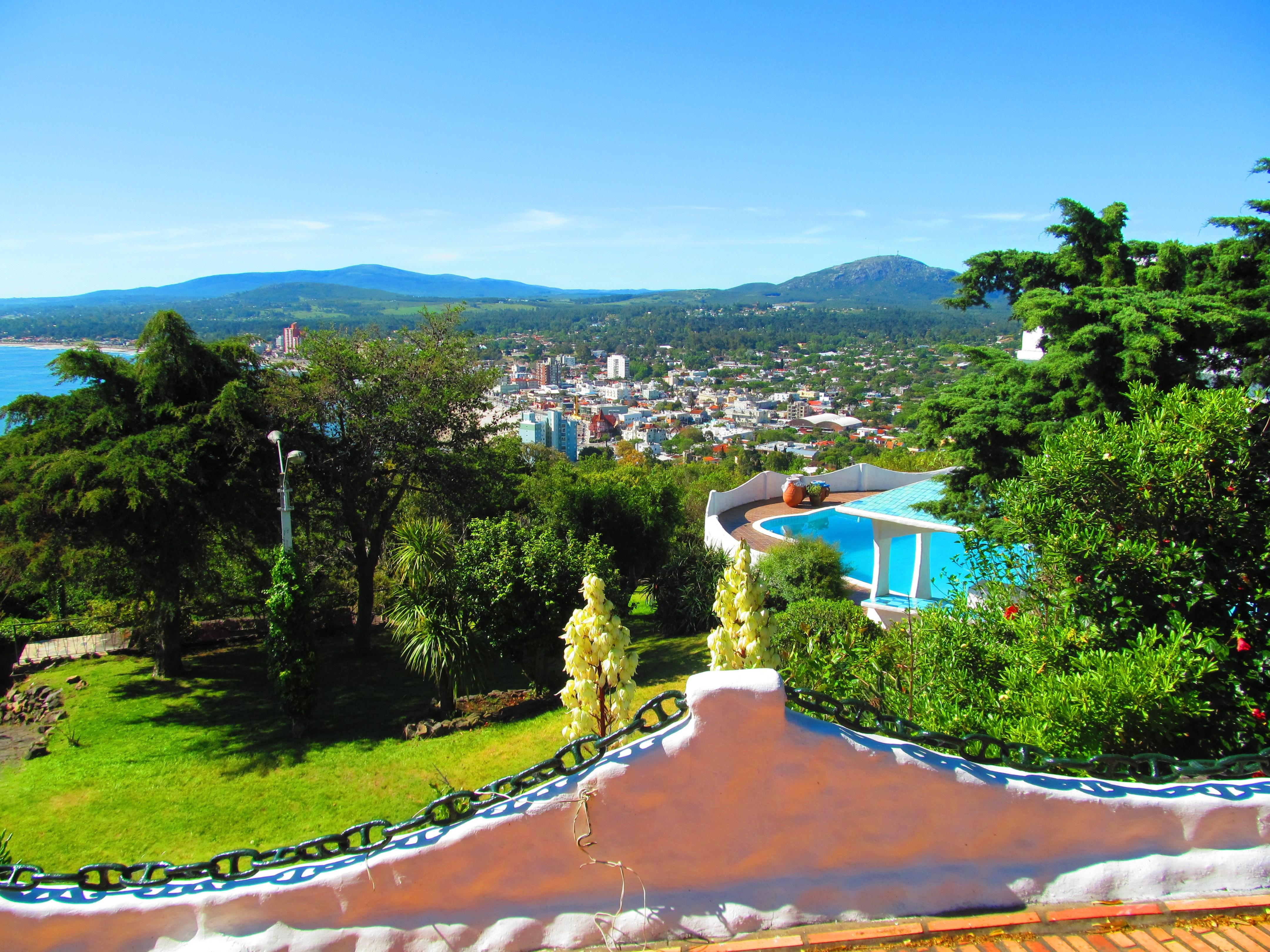










































WINNER OF OUTSTANDING OUTREACH 2015 6 BEST RUSSIAN FILMS OF 2015 РУ́ССКИЙ ΒΑΣΙΛΟΠΙΤΑ ΕΛΛΗΝΙΚΑ SAN SEBASTIÁN: CULTURE CAPITAL CULTURE ASA ISOMOLORUKO YORUBA 四川: 熊猫以外 汉语
Issue 15
FEATURED ARTICLE
EDITOR’S NOTE




































































































year and welcome all language learners and culture vultures to the 15th issue of our magazine!


PAGE 7
OUR TEAM
This issue is jam-packed with new articles on world affairs, culture and lifestyle and showcases the diversity and global presence of students at UoB. We really hope you enjoy this edition bursting with more languages than ever before! Inside you will find fresh content and photography from all our usual European, Russian and Chinese language sections, as well as writing from our new Yoruba and Arabic editors! Many of our beautiful pictures have been taken by our team of editors and writers themselves while on their adventures around the globe. Notably the front cover picture of Piriápolis has been taken by Kia, our designer, while on her year abroad in Uruguay! Particularly worth checking out inside are ‘What Does the New
Year Mean for You?’ by Joanna Hutchings and ‘6 Best Russian Films of 2015’ by Klaudia Kowalska for all our readers learning Russian.
Remember that anyone is welcome to join and write for us whenever you like. It doesn’t matter where you are from or what you study. Whatever your interests, we’d like to hear about your international experiences! We are holding elections this March for next year’s team and will be organising a workshop soon to give you an idea of what it’s like to be part of our editorial team. Being a secretary, treasurer, publicity officer, or editor of one of our sections is a great way to make your CV shine. It's also a brilliant way to gain added skills and meet awesome people. Feel free to get in touch with us and follow us on social media to learn more. Thank you for picking up a copy and happy reading!
(Front cover: Photograph of Piriápolis in Uruguay, and Inside Cover: Photograph is of Buenos Aires in Argentina both taken by Kia Marie Hunt)"
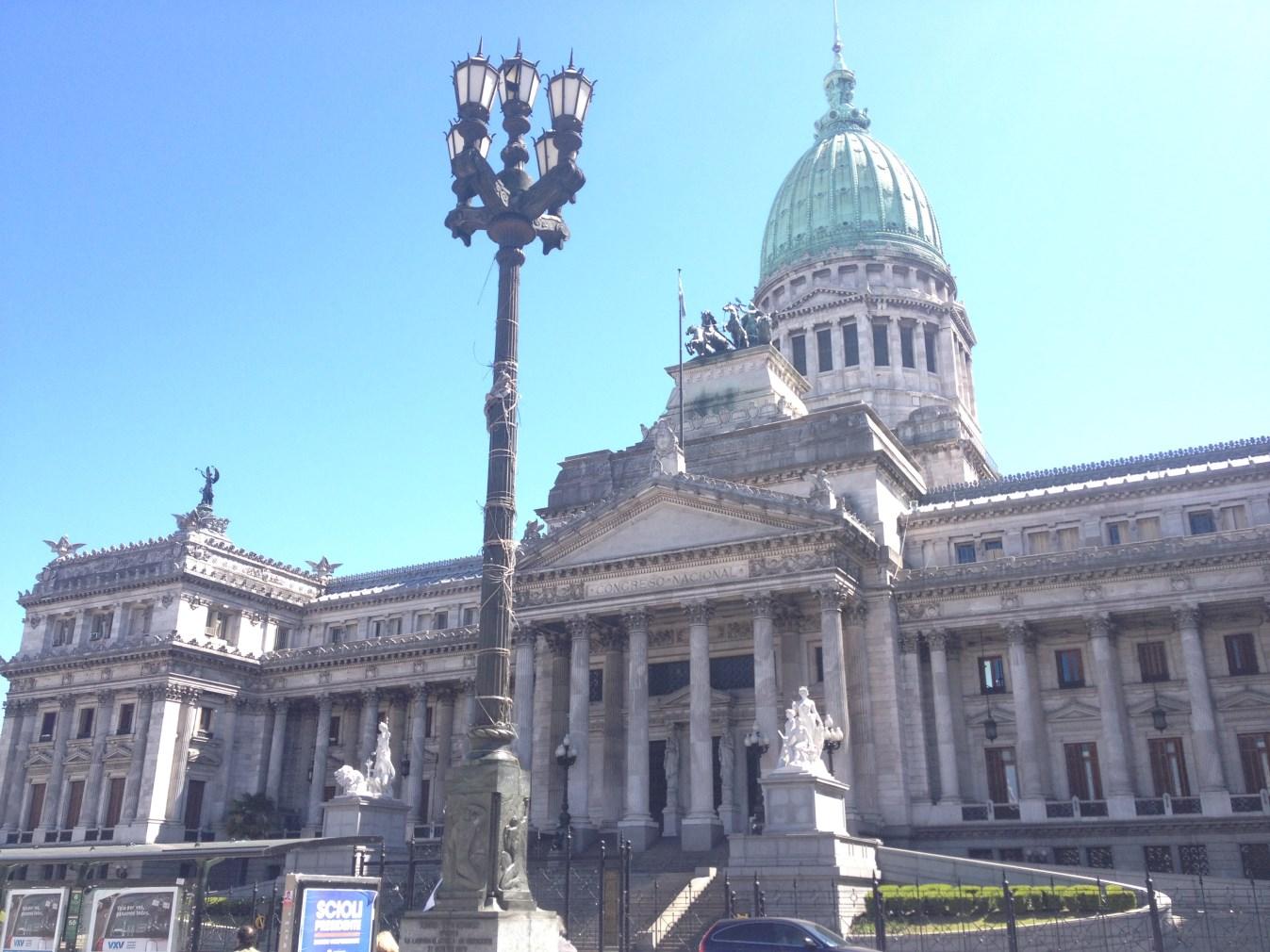
January
2016
by Dominique Phipp
BEYOND THE CANALS: VISITING PADUA & VENICE WITH LOCALS
PAGE 3: LIFE & STYLE
PAGE 4: CURRENT AFFAIRS
PAGE 5: CULTURE
PAGE 7: TRAVEL
PAGE 9: FOOD & DRINK
PAGE 10: ةيبرعلا
PAGE 10: ITALIANO
PAGE 11: ESPAÑOL
PAGE 12: FRANÇAIS
PAGE 13: POLSKI
PAGE 14: DEUTSCH
PAGE 15: PORTUGUÊS
PAGE 16: РУ́ССКИЙ
PAGE 17: ΕΛΛΗΝΙΚΑ
PAGE 18: 汉语
PAGE 19: YORUBA
7




































































If you would like to know more about our magazine, our writers or have comments to make about our articles then feel free to check out our Facebook and Twitter pages or email us. If you wish to read more articles check out our website. We’re always looking for new writers and contributors, so don’t hesitate to get in touch!

linguist@guild.bham.co.uk


IN THIS ISSUE
THEUOBLINGUIST.CO.UK UoBLinguist_Mag The UoB Linguist Magazine UOBLINGUISTMAGAZINE
CONTACT
17
US
WHAT DOES THE NEW YEAR MEAN FOR YOU? By


10, 9, 8, 7, 6, 5, 4, 3, 2, 1!



These ten numbers I’m sure resonate with everyone, like they do with me, as the sounds uniting people from around the Globe in welcoming the New Year, whilst waving goodbye to the one just past. As with every other year, when the clock struck midnight to mark the end of 2015 I’m sure that most people were filled with excitement, and hope for the promise of what’s to come in 2016. Some may have been sad to see 2015 come to an end, whereas some I am sure were glad to see the back of it. Many New Year’s resolutions will have been made with every intention of sticking to them and gym membership sales will have rocketed on the 2nd of January…
Joanna Hutchings
Despite many overly-negative year reviews, the flooding, attacks etc., there were in fact many things to celebrate in 2015. On the 22nd of December, Britain’s very own Tim Peake led the way for many aspiring young astronauts, as he and two others launched off to spend six months on the ISS. In sport, Andy Murray received the award for Sports personality of the year, for the second time, after winning Great Britain the Davis Cup for the first time in 79 years, whilst Jessica Ennis incredibly went on to win a gold medal at the Beijing World Championships, just 13 months after giving birth to her son. As for the world of fashion, many British models and designers such as Jordan Dunn and Karl Lagerfeld were recognised for their contribution to the industry in the star studded British Fashion Awards in November, and the beautiful Madeline Stuart also became the first model with down-syndrome to walk the cat-walk in September.
So, having looked back at just a snippet of great achievements we bore witness to in 2015, it is also interesting to consider what excitement we can expect in the coming year. In November, America will decide who will be their 45th President, and I’m sure we can expect a very interesting race between the Republicans and Democrats... are you backing Clinton to become the first female president, or is your money on the somewhat controversial Donald Trump? Rio is set to host the Summer Olympic Games, with much anticipation, and hopefully Britain is set to win a few golds! And, as women gain more respect and power, we are hoping to see the highest positions for the top jobs in the world filled by female candidates – an important step in the right direction for female equality.
However, on a more local note, many of you, like me, will be graduating from Birmingham this summer. Now as much as I try not to think about the prospect of entering the real world too much, it is indeed a reality to be faced, but an exciting one none the less. The best part of a new year for me is the prospect of the unknown, and the uncertainty of what is to come – the scariest but best part of being young! I am not one for making new resolutions; however I intend to take every oppor-tunity as it comes, and embrace the New Year with no feelings of regret for what has already passed; and my advice to you would be to do the same!
3 GUILD OF STUDENTS ‘OUTSTANDING OUTREACH 2015’!
PARIS IS NOT ENOUGH
By Saul Shimmin

The agreement reached at the Paris Summit last December is an unprecedented and positive development in international efforts to sustain the environment. Whilst it is worthy of celebration, it does not merit the degree of triumphalism that has surrounded it in the media. The agreement that was reached is a draft proposal, meaning that it still requires ratification by the countries represented at the conference. Realistically, some of the states that agreed to the proposal will not adhere to it. The U.N does not have any real power to resolve such non-compliance by member states. Whilst this point is tinged with cynicism, it is also tempered by reality.

The previous protocol established in Kyoto in 1997, entailed extensive reforms such as ‘sustainable agriculture’, reducing greenhouse gas emissions and developing ‘energy efficiency’. As the New Scientist points out, the U.S never agreed to the protocol. As there is nothing stopping states from rejecting the proposal in their respective legislatures back home, America’s decision to ignore the protocol was reciprocated by other nations producing high levels of greenhouse gases. Many of the states likely to renege on the draft proposal will be developing countries as their growing economies are based upon manufacturing and resource extraction. Both create high demands in energy that can only be sated cheaply by fossil fuels. Plus who can blame them for doing so? These countries are hungry for the lifestyle that more developed nations like us have. Article 6 of the draft proposal does provide significant assistance to developing countries in tackling the effects of climate change within their borders. Assistance is a worthwhile act but it will not dissuade them from their pursuit of economic growth. Just as these nations cannot exploit our past responsibility for climate change to cause wanton pollution, we cannot reprimand them for using cheap fossil fuels to develop. This cycle leads to an impasse between developed and developing countries that will not be breached. The elites of country present at Paris receive their mandate from their people back home, not the U.N, so ultimately they are going to pursue whatever suits their domestic interests.



In politics classes, the word ‘narrative’ often surfaces, the idea that the web of events that make up life adhere to some pleasant linear order. One of my politics teachers jokes that politics students, bridled by an unhealthy obsession with the subject, see narratives everywhere. Maybe he is right, but with the advent of the Paris agreement it is hard not to see a narrative poking through the articles. When the environment is discussed it predominately revolves around climate change, and consequently, greenhouse gases. Yet, saving the environment presents a daunting myriad of problems. Think about oil. We are told that we need to stop using oil in power plants and cars, and that will reduce greenhouse gas emissions and diminish global warming. Yet oil is the fulcrum of our economy. Many of the products you use or consume daily derive from oil. The keyboard I am typing on consists of plastic, plastics consist of polymers and polymers come from oil. A quick search on the internet proves my point. ExxonMobil has even got a webpage about the many products made from oil. The draft proposal at Paris does not simply talk about reducing global warming, it also entails preserving bio-diversity among other issues. Yet this is not talked about enough in the public domain. The simple narrative that persists is that we need to cut greenhouse gas emissions. It suggests that we can adapt without making painful choices that may mean sacrificing many conveniences within our lives for a long time.
(To continue reading full article, visit our website: www.theuoblinguist.co.uk)

4
THEUOBLINGUIST.CO.UK
SAN SEBASTIÁN: CULTURE CAPITAL By Billy Proudlock






Donosti’s time has finally come. Since taking part in a school exchange many years ago, I’ve been well aware that this beautiful seaside city had been chosen to be a European Capital of Culture for 2016. My exchange partner and his teachers proudly reminded us of this fact with their constant wearing of “Donostia 2016” tshirts and stressing that I must visit again in 2016. Previous European Capitals of Culture have included the easily forgettable Mons, Umea and Kosice. The award has often been greeted with derision in England (see Hull’s recent nomination) but to the Donostiarras, this is their moment to showcase their vibrant, Basque city.
Set on the northern Spanish coast 15km from the French border and focused around 3 beaches, Donosti is a gloriously proud city. After one walk along the Boulevard, it would be impossible not to know that this is a European Capital of Culture. Posters and signs are prominently displayed in shop windows and every public building. To the Basque population, it's their chance to show Europe what being Basque entails. Beyond Spain, the Basque Country and its 3 million people are not well-known; its capital city Donosti even less so. One reason for its being unspoilt is its lack of an international airport. Easyjet, British Airways and Vueling all fly regularly from London to the less aesthetically-pleasing Bilbao, where most people choose to stay (one hour from Donosti). Donosti is statistically the most expensive city for living in Spain (in terms of € per m 2) and until last year held the record for most Michelin stars per capita in a city. Don’t let these things frighten your student mind or wallet. The high number of Michelin-starred restaurants ensures that less-acclaimed neighbouring restaurants maintain high standards. Stroll through the Parte Vieja any given lunch time and enjoy quality meals for no more than €15. Mention Donosti to anyone from the Iberian peninsula and their instant reaction will be to talk about food. The old town is littered with bars and cafes which serve beautifully hand-crafted pintxos (Basque tapas). Typically served on a small piece of bread delicately stacked with meat (amongst other things), pintxos are why foodies come to the Basque Country. The old town is famous for its pintxos but on Thursdays just across the bridge, Gros is the place to be. A couple of years ago bar owners in Gros launched “Pintxo-Pote” (literally ‘snack and drink’) whereby bars would sell a drink and selected pintxos for €2. Needless to say, Thursday is the night that the city comes to life – no matter the weather or time of year.
This small city of just over 100,000 people boasts three beaches. Mountains with incredible views overlook them and make for a rewarding climb. Museums detailing the Basque history and struggle are dotted around the city – those in the old town are particularly noteworthy and free on certain days. Indulge yourself in a trip to a cider house where you can gorge on steaks while pouring unlimited cider straight from the barrel. Get lost in the old town and its maze of streets with independent shops, supported by the local government opposed to chain stores (no Starbucks). Take in a football match at Anoeta stadium. Rent a surfboard at one of Europe’s best surfing beaches. Discover the famous international film festival in September. Witness strange forms of animal herding. Listen to improvised poetry slams (bertsolaritza). Gaze endlessly over the bay from the top of the mountains.
2016 European Capital of Culture or not, Donostia-San Sebastián is a breath-taking city waiting to be discovered.

GUILD OF STUDENTS ‘OUTSTANDING OUTREACH 2015’! 5
SCANDINAVIA STRIKES AGAIN: THE SURPRISE BESTSELLER
 By Jenny Nicholls
By Jenny Nicholls
Of all the books in the list of Christmas bestsellers this year, one in particular stands out as unusual. Lars Mytting’s ‘Norwegian Wood: Chopping, Stacking and Drying Wood the Scandinavian Way’ has been an unexpected hit in the UK, reaching number 21 in the official chart in the week leading up to Christmas. Published by MacLehose Press in November 2015, it had to be reprinted four times in one month in order to keep up with demand.
The book (whose original title is ‘Hel Ved’) was a runaway success in its native Norway when it was published in 2011, selling over 300,000 copies and remaining in the bestsellers list for over a year. It even inspired a 12-hour-long TV programme – watched by around a fifth of the population – that showed a burning fireplace accompanied by commentaries about the process of preparing firewood.






So why has the book been such a success in the UK? After all, ‘Norwegian Wood’ does exactly what it says on the tin. It contains information and how-to guides on things such as selecting the best axe and chainsaw, building effective wood stacks, and the characteristics of different types of wood – knowledge that is neither commonly sought nor strictly necessary in this country of relatively mild and snow-free winters. Perhaps the real appeal instead lies in the book’s reflections on nature, trees, myths and legends, and above all, labouring in order to live self-sufficiently. Mytting comments that the book a very basic dream of human survival,” and his lyrical prose style (Mytting is first and foremost a novelist) perfectly evokes the forests of Norway. So forget those grisly Scandinavian crime thrillers, pick up this book instead and emopportunity to become an “armchair wood chopper!”
By Lucy Harkins

After having visited Paris for the very first time in 2013, I found that this beautiful capital city did not fail to exude that classic French charm captured by film directors in films such as Jeunet’s ‘Amélie’ or Godard’s ‘A Bout de Souffle’. I marvelled at the grand architectural allure of the Louvre, the brilliant contrast between the modern glass and traditional wrought iron structures, and the culinary reputation of France’s fine wine and distinct, artfully presented cuisine. All of these are typical associations with the lifestyle and culture of Northern France in particular.
However, this charming and appealing lifestyle does not just apply to the northern region of France. In fact, the southern region of France offers this too… and more. Colloquially known as ‘le Midi’, the South of France borders the Italian and Spanish coastlines, and so it is not surprising that it has an exciting mix of culture and heritage. The city of Nîmes in the Roussillon region, for example, is referred to as the ‘French Rome’ because of its foundation as a Roman village during the Roman Empire. About 230km east of Nîmes, you reach the beautiful coasts of the Côte d’Azur (aka. the French Riviera), including Saint Tropez and Nice, home to white sandy beaches and an azure blue sea (hence the name). During the 18th century, this region was considered a popular holiday spot for British and Russian aristocrats, and it is still a popular destination for the general public today. Thus, unlike Northern France’s charm and beauty, the South of France also has an element of luxury and leisure which allows one to escape from the busyness of work life. Moreover, the culturally rich region of Provence should not be ignored either, as it is one of the most beautiful regions in terms of its mountainous views and famous lavender fields, which were often painted by Cezanne.
It goes without saying that Southern France is a special destination full of character, life and charm. One should visit at least once in a lifetime, as it is a step away from the typical Parisian culture usually identified with France.

6 THEUOBLINGUIST.CO.UK
(Photo Credit: acLehose Press )
LE MIDI
BEYOND THE CANALS: VISITING PADUA & VENICE WITH LOCALS
 By María del Carmen Martín Buro
By María del Carmen Martín Buro




What would you think if I say that I had an amazing day in Venice without eating pizza, riding a gondola or having a hot cup of cappuccino? Venice has hidden treasures beyond places featuring on postcards and it is worth finding them.
The first weekend of November, we went to Padua to join our Italian friends in giving another friend a birthday surprise, so we had the opportunity to first explore Padua, followed by Venice, both guided by two of our local friends. The experience of visiting historical places like the famous San Marcos square just by following the steps and the words of people who live there was amazing.
Despite being neighbouring cities in Veneto, northeast Italy, Padua and Venice differ a lot in terms of their characteristics and a two-day trip is definitely needed to discover the rich Italian culture. Padua is a city imbued by university life as located in the city is the University of Padua; one of the most ancient universities in Europe. To me, the most impressive square in Padua will have to be the Pratto de la Valle square. This elegant oval square is one of the largest in Italy, formed by 78 statues around the canal, which create the illusion of a green island. In contrast, Venice is known for its canals and the carnival of Venice. Both attract thousands of tourists every year and are two of people’s favourite attractions across Europe. Our first contact with Venice was a glass of spritz, a wine-based cocktail, drunk on a sunny terrace in the square Piazza dei Signori. When night fell, we walked three minutes away to find a lovely street market in the Piazza dell’ Ebre. The fresh fruits and vegetables there created a beautiful contrast with the old surrounding pillars and arch-based architecture.
When we were on the train that took us from Padua to Venice, one of our Italian friends said ‘I really want to see your faces the first time you see Venice’, anticipating the reaction we would have in few minutes. No wonder they said that because just in front of the train station the view was already very impressive. From this entry point to the city you are surrounded by the Scanzi Bridge and the Grand Canal, and stand across from the huge green oxidized dome of San Simeone Piccollo church. Once settled, you have a completely different conception of time because there are no cars and the best way to travel is on foot. Instead of using minutes, the locals measure how long it takes to get somewhere in the numbers of bridges they have to cross. Strolling in this peaceful manner you can spend the whole day ‘bar hopping’ – that is going from one bar to another eating cicchetti, a type of little appetizer. Consisting of foods like Baccalà Mantecato, a creamed dried codfish on top of bread slices, cicchetti is authentic to this region. We even went to a Venetian bar called Cantina do Spades that was hidden in a very narrow street called San Polo (not on tourist guides) and tried a variety of cicchetti inspired by the local cuisine and served with a little glass of white wine called ombra. Finally, we did not lose the opportunity to eat a tasty piece of pizza when we returned to Padua.
In spite of visiting Italy for just a weekend, I had an amazing time there due to the unique environment and the variety of things I could do. If you are planning to visit Italy, just immerse yourself in its atmosphere and enjoy.
GUILD OF STUDENTS ‘OUTSTANDING OUTREACH 2015’! 7
WINTER IN GREECE
Greece is one of the most well-known summer destinations across Europe. Hundreds of islands and countless coastlines attract thousands of visitors every year. However, Greece also makes nice winter getaways, since there are many destinations that visitors can visit during winter, some even exclusive to winter weather.


 By Maria Aslani
By Maria Aslani
The most famous winter destinations in north Greece are probably the mountain of Voras and the village of Agios Athanasios. The mountain of Voras belongs to the municipality of Edessa and is built on an altitude of almost 1,200 metres. Visitors can go hiking or even practice their skiing skills on the mountain. The village of Agios Athanasios is known for having many narrow side streets and stony houses built according to Macedonian architectural conventions. There is a relatively short distance between Agios Athanasios and other natural monuments, meaning that visitors can plan daytrips around these places easily. Nightlife in Agios Athanasios is not to be missed either: the settlements provide every kind of luxury during night-time. Local restaurants and bars offer service until the dawn, so even if you do not feel adventurous during daytime, you will definitely be entertained here.

As a city that is traditional looking yet modern in terms of lifestyle, Kastoria is also a nice place for people to organise a Christmas trip to. Kastoria is known for housing a spectacular view of the lake of Orestiada. Also, the city itself has dozens of byzantine churches and settlements with traditional mansions. For example, close to the city is the archaeological site of Dispilio, one of the most well-preserved Neolithic settlements across Europe. Meanwhile, the annual local carnival is famous as well: to mark the start of the New Year, a three-day carnival is organised on 6th January every year. For three days the entire city dances to the rhythms of different Balkan music. For visitors who would like to have some more active fun after a day of sightseeing, there are also ski resorts around Kastoria within an hour’s drive, offering visitors the chance to enjoy exclusive winter sports.
The cosmopolitan city of Arachova is another top winter destination. Arachova is about 150 km from Athens. Built on the slopes of mount Parnassos, Arachova offers spectacular mountain scenery and walking paths across the traditional settlements. The most well-known monument is probably the clock on the sharp rock Tyrias. The fact that the ancient oracle Delphi is only 12km away from Arachova also offers a great opportunity for visitors to go and see the “navel of the world”. Again, Arachova also houses lots of skiing resorts and has a plethora of restaurants and bars operating until dawn, so make sure you do not idle your evening away when you do come and visit.
There is no doubt Greece is one of the best destinations for a summer vacation. However, the country has many equally good winter attractions, and I would say these are all hidden gems, yet to be discovered by visitors and awaiting discovery. Last but not least, wherever you are travelling to, bear in mind that every city in the world has its own beauty and secrets to be revealed. All you have to do is to observe carefully. By doing so, I am sure you will be able to find something amazing even in the most ordinary things.
8 THEUOBLINGUIST.CO.UK
PAINPERDU: A FRENCH CLASSIC MADE FOR A STUDENT BUDGET
By Libby Barrett
As toast is a staple student food, I thought I would take some inspiration from our neighbours across the channel and try out this recipe for Pain Perdu – commonly referred to as ‘French Toast’ in English. As the name ‘perdu’ suggests, this medieval dish is a great way of using up the last few stale slices of bread which might otherwise be ‘lost’. Cheap, quick and easy to make, it makes an ideal student breakfast, snack or dinner.
Ingredients:

4 slices stale sandwich bread
1 medium eggs
2 tablespoons sugar
300 ml milk
½ teaspoon pure vanilla extract
20 grams butter
½ teaspoon cinnamon (Serves two)







WHERE ARE THE SPROUTS?
Directions:
1.Beat the egg, sugar, cinnamon and vanilla extract in a bowl until well combined. Whisk in the milk.
2.Dip the bread slices into the egg mixture, one at a time.
3.Melt the butter in a pan on a high heat. Then reduce the heat to medium and panfry the bread for 2 minutes each side or until golden brown.
4.Serve immediately - delicious with fresh fruit. Bon appétit!
By Sam Arrowsmith
Despite being a popular vegetable in Brussels, sprouts only seem to really come into their own around Christmas time, particularly in the UK. Brussels sprouts are often just associated with Christmas dinner, like pigs-in-blankets or roast turkey. This is probably the case if you spent Christmas Day in the UK, but what if you ate Christmas dinner somewhere else in the world? If you do, it's very likely that you wouldn't find some of the quintessential UK Christmas dinner items on the table (especially sprouts). So what would there be instead?
The Guardian recently published an article surveying what various families eat for their Christmas meal, in the UK and Europe. While most people eat turkey and sprouts as part of their dinner, a lot of Europe does not. Other meats tend to be more popular across Europe; Goose is particularly popular in Germany, as is Ham in Finland and Duck in Denmark. Certain countries, such as Sweden and Portugal, incorporate their specialty fish dishes into their Christmas meals (pickled herring and salt cod respectively).
Regarding the variety of food served on the table, each country will have a vast platter of meats and vegetables - however, France goes the extra mile with its Christmas meal, known as réveillon (literally meaning "waking"). Réveillon is a meal that starts in the evening on Christmas Day, with the usual trimmings plus lobsters, oysters and escargots, and the participants stay awake till midnight finishing it (hence the name). Other countries, such as Belgium, Brazil, Canada (Quebec) and the USA (New Orleans) sometimes have this particular dinner as well. However, lots of countries do seem to follow the UK tradition, such as the USA, Australia and New Zealand. Tamales are popular in Central America, whilst brazil nuts are popular in South America as part of this festive meal.
These examples just touch the surface of the variety of Christmas food enjoyed across the world. It goes to show that whether you like sprouts or not, there's much, much more to enjoy whilst partaking in the season's eating.
(For more information visit: www.theguardian.com/lifeandstyle/2015/dec/21/what-does-
10 THEUOBLINGUIST.CO.UK
-eat-christmas-
GUILD OF STUDENTS ‘OUTSTANDING OUTREACH 2015’! 9
europe
dinner-mapped)
I POSTI PIÙ BELLI PER SCIARE IN ITALIA di Klaudia Kowalska
Se vogliamo passare un weekend o una settimana bianca a rilassarci, ma anche praticando il nostro sport preferito, dobbiamo scegliere bene la nostra destinazione. In questo articolo, ovviamente parleremo di Italia e di suoi posti più belli per darvi qualche informazione oppure un’idea per questa stagione invernale, se non fosse troppo tardi, o per le vostre prossime vacanze. L’Italia offre tante stazioni sciistiche localizzate sulle famosi Alpi e sull’ Appenino centrale.

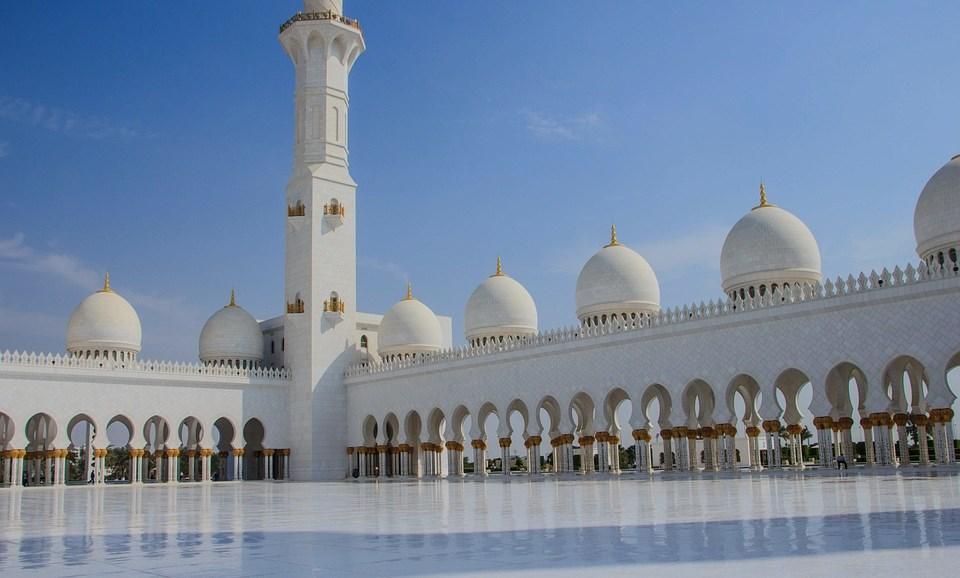

1.Cervinia, situata in Valle d’Aosta, è da sempre una delle mete preferite dagli sciatori italiani e stranieri, dove è possibile sciare anche in estate e tutta la giornata senza mai rifare la stessa pista. Qui lo sci non conosce stagioni e attrae i turisti anche in luglio ed agosto sempre con neve bianca ed aria fresca.
2.Livigno, situato in Lombardia, è una destinazione sfruttata ogni anno da migliaia di appassionati di sci, freestyle e snowboard. Lo snowpark è infatti il più grande e attrezzato d’Italia.
(Per continuare a leggere tutto l'articolo, visitate il nostro sito web: www.theuoblinguist.co.uk)












ةمصاعلا يف ىقبأ نأ تررق دقف .دصقأ ام نومهفت فوسف يلثمرفسلا اوبحت متنك نإف .لبق نم اهلَّيختأ مل تارماغم هيف ا عضو يف يه نلآاو يبنجلأا للاتحلاا اهيلعرتاوت دقو خيراتلاربع ةدتممو ةثيدح ةنيدم يه توريب .ةيبرعلا ةغللا ةساردل رهش ةدمل توريب قتس دعب يسايسرار ترعش رحبلا ئطاش ىلع تهزنت امدنع .ةفلتخملا ةينيدلا فئاوطلا ددعت مغرب يملسلا ينيدلا شياعتلا اهيف دجتو .ةليوطلا ةيلهلأا برحلا أب سين ةنيدم يف ينن شو برحلاراثآ اهيلع تويب دجت ةثيدحلا قرطلاو تايانبلا نيبو .باحسلا تاحطان كانه دجت ئطاشلا ىلع يتلا تلاخنلا ىلإ ةفاضلإاب :ةيسنرف راو ةفقوتم ع لاو راحلا هلابقتساو ينانبللا فطلبرعشت كانه عراشلا يف تنأو بيطلا يهشلا ينانبللا ماعطلا عيب تلاحم كانه دجت يشمت امنيأ .نمزلاب اسم .ةجاحلا دنع ةدع تثده يتلا تارماغملا برغأ يفو .عراشلا عطق دنع ةايحلا ديق ىلع ىقبت نل كنأب سحت ةيرورملا ةكرحلاو ةينانبللا عراوشلاب ماحزلا يفو عم امدنع كانه ي يداعلا يسكتلا نع فلتخي لا هنإ ؟"سيفرس يسكت" وه ام نولءاستت مكنإف يبرعلا ملاعلا يف اورفاست مل متنك نإو ."سيفرس يسكت" يف تبكر لاإ ئاصا يارلا هرعس يف ءيش مهأو ةيساسأ لب ةليلق 0222 لا نأ نكميو هاجتلاا سفن نودصقي نيذللا نيرالآا باكرلا عم ةرجلأا باكرلا مساقتي ةداعلا يفو ةريل دقو .يسيئرلا قرفملا وأ يسيئرلا ناكملا ىلإ لصت نأ نكميو دوصقملا ناكملا ىلإ كلمحي ينولأس ةرايسلا يفو ."فحتملا ىلإ" هجتملا موي لك لقلأا ىلع تارم عبرأ سيفرسلا تذاأ يف يتماقإ نع انملكت دقلو .ةيزيلجنلإاب تلمكاو ىحصفلاب يباوج ناكو ةيماعلاب قاوسلا ةضايرلا نع يعم اوثدحت ةيلاطيإ يننأ اوملع امدنعو ينانبللا بعشلاو ةيبرعلا ةغللاو توريب ابيغراركتلاب ىهتناو "؟ةيجيورن تنأ له" ثيدحلا أدب دقلو .مدقلا ةركل نييلاطيلإا نيبعلالاو ناكو ىهصفلاب ملكت يذلا ديحولا قئاسلا تيقل ىراأ ةرم يفو .هبلط بسحب قئاسلا مقر ةيدهريغص باتك قئاسلا هاطعأف اوثداحتو ةرايسلا يروس باش دعص امدنع.هتغلب اروخف .رفسلا اذه لضفب ةنيمثو ةليمج تايركذ نلآا يدنع .لايجنأ ناكو 10 THEUOBLINGUIST.CO.UK
ةيبرعلا لا ام !ةرماغم "سيفرس يسكت" ىلع ةلوج توريب يف STELLA BRIOSCHI
LAS ELECCIONES GENERALES ESPAÑOLES DE 2015
Después de semanas de propaganda, debates y campañas, las elecciones generales tuvieron lugar el 20 de diciembre – y han producido unos resultados verdaderamente únicos en la historia política moderna de España. El Partido Popular (PP), el partido del presidente actual, Mariano Rajoy, ha ganado las elecciones, pero ha perdido su mayoría absoluta en el Congreso de los Diputados, mientras que el Partido Socialista Obrero Español (PSOE) perdió 20 escaños. Por su parte, nuevos partidos en el panorama político, Podemos y Ciudadanos (C’s), han conseguido adquisiciones históricas. Como se puede observar del gráfico, el PP todavía necesita 50 escaños para lograr una mayoría absoluta. Esto no es inusual en España, pero sería casi imposible para el PP gobernar solo con tan pocos escaños. Al inicio de un nuevo ciclo parlamentario, todos los diputados se reúnen para elegir al Presidente – y sin el apoyo de otros partidos, será imposible para Rajoy quedar Presidente.







Para formar un gobierno con una mayoría absoluta, es probable que se necesite una coalición con otros partidos. Como ganador de las elecciones, Rajoy tiene prioridad para formar gobierno. Es improbable que el PP quiera negociar con el PSOE y Podemos, partidos de la izquierda, ya que han dicho, junto con C’s, que rechazarán el gobierno del PP en el parlamento, aunque Rajoy sigue confiando en que pueda ganar su apoyo. Si no hay acuerdo, el líder del PSOE, Pedro Sánchez, tendrá la oportunidad de intentar formar gobierno, pero necesitaría el apoyo de Podemos y C’s para obtener una mayoría. Es improbable que Podemos y C’s quieran una coalición juntos, y Podemos insiste en que el PSOE tendría que ofrecer un referéndum sobre la cuestión de la independencia de Cataluña, algo que el PP, el PSOE y C’s quieren evitar desesperadamente.
En España, un primer vistazo nos ilustra que la situación ha dado un gran giro. Mientras que el PP ganó el número más elevado de representantes, sufrió una caída precipitada. Por ejemplo, perdió el número más grande de escaños desde 1982, con una cifra de 64 escaños perdidos y una reducción de un 16 por ciento, la peor desde 1989. Además el PSOE perdió 20 asientos y no consiguió tener un gran impacto sobre los avances del PP. Sin embargo, lo más sorprendente es que el partido más abiertamente a la izquierda en sus políticas, Podemos, ganó 5 millones de votos, un 20 por ciento del total, 69 escaños y soló fue un 1,3 por ciento. Esto es completamente contrario a las predicciones de muchos expertos. Mientras que este acontecimiento ilustra los fracasos en el sistema de predicciones y encuestas, el hecho es que, a pesar de las campañas de ultraderechistas, los izquierdistas están haciendo progresos.

No obstante, con respecto a la población de España después de la elección, la demografía de votantes se parece a la de Inglaterra en mayo. Por supuesto, es cierto que el PP controla el centro de España: las zonas autónomas de Galicia, Castilla, León y Castilla la Mancha son dominados por el PP. Por el contrario, el PSOE todavía tiene apoyo en Andalucía y Extremadura, en las zonas de Sevilla, Córdoba y Badajoz. Por otro lado, la adición más chocante e interesante en el mapa político es el control de Catalunya y Tarragona por parte de Podemos. Lo que ha chocado a mucha gente es que el partido cuyo origen fue el movimiento social de ‘Los Indignados’ apenas se fundó en marzo del año pasado.
En conclusión, a pesar de una victoria en teoría para la Derecha, nunca se hubiera imaginado que podría ser evitada por una coalición de la Izquierda. Mientras que la polémica con respecto a Cataluña es la gota que podría colmar el vaso, es necesario que se tenga en cuenta que el avance enorme de la izquierda el año pasado representa un rechazo debido a la desigualdad, el paro y las políticas de austeridad.
 por Connor Haines por James Hill
por Connor Haines por James Hill
11 GUILD OF STUDENTS ‘OUTSTANDING OUTREACH 2015’!
MON EXPÉRIENCE COMME AU PAIR DANS LA VALLÉE DE LA LOIRE par Jessie Read
Cet été, j’ai passé 5 semaines en tant que fille au pair (j’enseignais l’anglais deux heures par jour) à la campagne près de la ville d’Amboise, dans la région du Centre en France. C’était une expérience incroyable parce que j’ai pu m’immerger complètement dans la culture française et visiter beaucoup d’endroits dans la région, pendant que je vivais comme les Français (par exemple comme on voit sur la photo à gauche, fêtant la Fête de la Saint-Jean à un hippodrome en Normandie).

Avant de partir en juillet, j’étais appréhensive parce que malgré le fait que j’étais déjà assez confiante quand je parlais français, je savais qu’il serait difficile quand on s’attendait à ce que je réponde rapidement et participe dans des conversations normales ! Cependant, après être arrivée chez ma famille d’accueil, j’étais bientôt très à l’aise parce qu’on me traitait comme un autre membre de la famille.

Mon niveau de français s’est vite améliorée, et j’ai appris tant de nouveaux mots que je n’avais pas considérés comme importants avant, mais qui soudain semblaient essentiels pour la vie quotidienne – des choses simples comme « une passoire » (sieve) ou « une taie d’oreiller » (pillow case) ! Bientôt, je n’avais plus peur de faire des erreurs et j’ai pris chaque opportunité pour demander du vocabulaire. Ma famille m’a souvent demandé des traductions anglaises et des différences culturelles, et j’étais donc plus à l’aise parce que je pouvais leur enseigner aussi. Dans l’ensemble, c’était absolument la meilleure façon d’améliorer mon français, car quand j’entendais tout le temps des conversations à vitesse normale, j’ai amélioré automatiquement et pouvais graduellement répondre plus vite et plus clairement.




En ce qui concerne les choses à faire dans la région, la Vallée de la Loire est célèbre pour ses châteaux. La plupart des villes ont leur propre petit château, et ils étaient tous très beaux. Amboise a son château célèbre (une photo à droit), et on y trouve aussi le Château du Clos Lucé où habitait Léonard Da Vinci juste avant sa mort. Les jardins magnifiques sont remplis de réplicas de ses œuvres et de ses inventions, qui créent tous une exposition vraiment superbe. Tous les intérieurs des châteaux sont merveilleusement meublés dans le style de l’époque où ils ont été construits.

Pendant un voyage en Normandie, j’ai pu aussi visiter Deauville, une ville décrite par ma famille d’accueil comme « celle que les Parisiens visitent pendant leurs vacances », soit une ville très chic. C’était très jolie avec de l’architecture normande classique (une photo ci-dessous, à droite) et de petites boutiques. On y trouvait aussi une belle plage avec des cabines de plage (ci-dessous, à gauche) qui portaient chacune le nom d’un acteur célèbre, car à Deauville chaque année, on célèbre un festival de film américain. En Normandie, on peut aussi visiter le Mémorial de Caen, un grand musée d’histoire qui a des sections sur l’histoire française et mondiale du 20ième siècle. Tout est très bien expliqué dans l’ordre chronologique avec des images, des textes et des artéfacts.

C’est clair qu’il y a beaucoup à visiter dans les deux régions, et j’ai eu beaucoup de chance de les explorer. J’ai appris que visiter des attractions touristiques a autant de valeur culturel que visiter le supermarché français ou recevoir des invités pour le dîner, parce que la meilleure façon de profiter d’une telle opportunité est d’être prêt à tout essayer et de voir chaque opportunité comme un moyen d’apprendre. Je retournerai sans hésiter dans l’avenir pour rester encore une fois avec ma famille d’accueil, parce que ça a été une expérience inoubliable.

THEUOBLINGUIST.CO.UK 12
GDANSK SHAKESPEARE THEATRE: OFF WITH ITS HEAD!
By Agnieszka Rze niowiecka


I knew that a new English Renaissance inspired theatre was being built in my home city in Poland since the first public announcement, but I had decided not to look at the design online – I wanted to see the theatre first-hand. When I finally arrived in Gdańsk, I saw something that could only be described as a brutalist-style Imperial freighter from Star Wars. Hoping that the builders went easy on the laser turrets, I went inside for a guided tour that uncovered architectonic symbolism I would otherwise not be able to decipher by myself.
Firstly, the ceiling – an obvious wink towards the Elizabethan theatres. The ceiling weighs one hundred tonnes, but can open or close in just three minutes. The turquoise colour is a reference to Verdigris, a pigment that develops on certain metals over time (it can be, for instance, seen on the Statue of Liberty or on the roofs of some of Gdańsk’s most iconic buildings). The stage is also mobile – it can quickly change from Elizabethan to Italian (proscenium), meaning that the theatre can adapt for many types of plays and performances.










Black bricks were used to build the theatre with a long-term goal: they will naturally lighten over time as opposed to red bricks that darken over time. The theatre is meant to fit in with the adjacent brick houses more and more with time, almost like a neighbour settling in a new city. Interestingly, the same bricks were used on a pavement nearby to outline a shadow of a no-longer-there synagogue.
The location of the theatre is also not accidental – it was built exactly where a 17th century theatre, called the Fencing School, used to be located. The Fencing School was probably the only place in Central and Northern Europe where Shakespeare’s plays were performed by various English troupes during the Bard’s lifetime.
Behind the exterior wall of the building, visitors can take a walk through labyrinth-like and exceptionally narrow corridors that reference streets of Gdańsk’s Old Town, thus creating a miniature city within the theatre. Lastly, to add to the Shakespeare Theatre’s meticulous design, small gaps between the walls and ceilings inside alter the acoustics in such a way that the staff members can communicate with each other from distant corners of the building without any difficulty, which is convenient and spine-chilling at the same time, especially when the voices are unexpected.
If you are planning on visiting Gdańsk, I highly recommend visiting the Shakespeare Theatre. Paraphrasing the Bard himself, though the nontraditional design may seem like madness at first, there is a method in it.
GUILD OF STUDENTS ‘OUTSTANDING OUTREACH 2015’! 13
ERWACHSENEN GEGEN DIE JUGEND“ von Jamie Colwell
Mit seiner Behauptung, Erziehung sei die organisierte Verteidigung der Erwachsenen gegen die Jugend, scheint Mark Twain, recht zu haben. Die in jedem von uns steckende ödipale Angst, von unseren Kindern ergriffen und ersetzt zu werden, wird nicht leicht unterdrückt. Denn das Älterwerden betrifft uns alle. Es ist deswegen völlig nachvollziehbar, dass die ältere Generation die gute Gründe für ihr Benehmen in den Vordergrund stellen will, damit die Jugend die Geschichte aus der gleichen Perspektive ansehen. Die ältere Generation bringt der jüngeren nicht nur die Ereignisse, sondern auch die Rechtfertigung zum Geschehen bei. In diesem Essay wird zuerst die Radikalität der Jugend besprochen. Im zweitem Absatz wird sich mit dem kontroversen Begriff „Verteidigung“ auseinandergesetzt, weil sie mutmaßlich eine Anklage von der Jugend zur Voraussetzung hat. Schließlich wird untersucht, wie Erziehung als Indoktrination ausgenutzt werden kann, und es wird gefragt, inwiefern diese die Jugend tatsächlich beeinflusst.
DIE MEINUNGSFREIHEIT
DER JUGEND KANN NIE GANZ UNTERDRÜCKT WERDEN”
Der um die Wende vom 19. zum 20. Jahrhundert entstandene Begriff „Jugendbewegung“ beschreibt eine Bewegung, die unter Jugendlichen und von Jugendlichen ausgeführt wird. Obwohl der Begriff ursprünglich insbesondere mit dem Wandervogel zusammenhing, steht er heutzutage für die Phänomen von einer von der Jugend durchgeführten Bewegung im Allgemeinen (Duden, 2015). Die Jugend sind oft radikal oder revolutionär. Manche behaupten, die Jugend radikalisiere sich wegen einer „Sinnsuche“, die „mit der Sehnsucht nach Geborgenheit, Anerkennung, Vertrauen, Fürsorge und Liebe“ (Şahinöz, 2015) verknüpt werde. Es steht fest, dass solche Gruppen Sicherheit bieten. Besonders Jugendliche, die eine „Konflikt-Biographie“ (Şahinöz, 2015) haben, nehmen die Identität der Gruppe an, und dabei ersetzen sie ihre eigene Identität. Jedoch kommt zu diesem Wir-Gefühl auch noch ein Gruppenzwang, der in diesem Zusammenhang sehr einflussreich sein kann. „Jugendbedürfnisse“, wie Abenteuerlust, Protestbedürfnis und Zugehörigkeit zu einer Clique werden von solchen radikalen Gruppen gestillt. Ein anderer Faktor ist das „Gerechtigkeitsempfinden“ (Şahinöz, 2015). Dies wirke einen starken Einfluss auf die Jugend, weil viele davon ausgehen, dass die Gesellschaft sehr ungerecht sei, so Sahinöz. Zwar mit dieser Behauptung verweist er auf ein anderes „Jugendbedürfnis“, nämlich den Idealismus. Jens Jessen kritisiert die Jugend, weil er glaubt, sie habe keinen Charakter (Hartung und Schmitt, 2008). Er fragt, warum die Jugend von heute sich nicht engagiere, er erkennt aber nicht den Optimismus als eine Art Aufstand. In einer Welt voller Pessimismus und Angst vor einer Zukunft von Globalisierung und Indiviualisierung versuchen auch die nicht ausdrücklich radikalisierte Jugend die Welt zu verbessern. Es ist tatsächlich ein Merkmal von Jugendlichen jeder Generation, dass sie an die Schaffung einer besseren Zukunft glauben.
Der Glaube an eine bessere Welt der Zukunft entspricht aber nicht eine Anklage gegen frühere Generationen, dass die Gesellschaft immer noch ungerecht ist. Er entspricht eher den idealistischen, menschlichen Wunsch, sich zu verbessern. Daher muss die Frage gestellt werden, ob es eine Verteidigung geben könnte, ohne dass eine Anklage erhoben worden wäre. Eltern ziehen ihre Kinder nach den vielfach bewährten Sitten der Familie auf. Sie vermitteln – so gut sie können – ihren Kindern ihr Wissen. Genau dieses Phänomen spielt sich auch in der Gesellschaft ab. Die ältere Generation eines Landes erzieht ihre Jugend nach den Sitten einer Kultur, die sich seit Langem bewährt hat. Der Jugend können aber diese Sitten als altmodisch erscheinen, weil die Jugend wie oben gesagt idealistisch und abenteuerlustig ist. Obwohl die ‚Erwachsene‘ schon ihnen die besten Gesellschaftssysteme und die erfolgsreichste Mentalität beibrachten, will die Jugend immer für sich selbst erfahren, welche Haltung zu unterschiedlichen Teilen des Lebens am besten wäre. Erziehung stellt daher keine Verteidigung gegen irgendwelche Anklage dar, sondern eine Begründung für das gegenwärtige Leben, wie es sich im Laufe der Geschichte entwickelte.
(Der vollständige Aufsatz ist online: www.theuoblinguist.co.uk )

















14 THEUOBLINGUIST.CO.UK
„ERZIEHUNG IST DIE ORGANISIERTE VERTEIDIGUNG DER
TRABALHO VOLUNTÁRIO NO BRASIL por Parin Hemtanon





A melhor coisa que eu já fiz na minha vida. Ser voluntário no Brasil. Trabalhei no Rio de Janeiro como coordenador do esporte durante julho 2015, com uma empresa que se chama Iko Poran. O diretor da empresa, que se chama Felipe Murray, é uma pessoa muito generosa, compassiva e simpática, e ele me cuidou o momento cheguei no Brasil. Ele me pegou no aeroporto e nos dirigiu para o albergue. Depois de chegar ao albergue, conheci todos os trabalhadores do albergue e os outros voluntários. Cheguei no domingo e meu trabalho começou no próximo dia, então pude conversar e conhecer mais sobre as vidas dos outros voluntários durante todo o domingo. Estava muito nervoso sobre o trabalho voluntário porque nunca tinha feito algo assim. Contudo, Felipe me fez sentir confortável e os outros voluntários que estiveram lá fizeram uma experiência perfeita da primeira vez! É possível para mim dizer que fiz amigos para sempre no Brasil.
Para meu trabalho, treinei futebol para as crianças na favala que se chama Barreira do Vasco. Trabalhei como voluntário por quatro semanas, de segunda-feira a quinta-feira. Iko Poran só nos faz trabalhar quatro días por semana para nos dar três días nos fins de semana de explorar a cidade do Rio de Janeiro. Trabalhei junto com outro voluntário, Philip, de Bélgica. Nossos días consistiram de treinar futebol com duas idades diferentes de crianças, treinamos um grupo de manhã e o outro grupo de tarde. Normalmente, as sessões são treinadas por Carlão, um homem que nasceu e cresceu nesta favela. Ele é muito caridoso e eu o respeito muito pelo trabalho que faz. Aceita as crianças e as leva fora da vida típica da favela ao usar o futebol. É popular na favela para treinar futebol porque cresceu lá, então as pessoas da favela o respeitam. As crianças e Carlão não falam ingles, então tive que aprender português rapidamente. Isto foi uma experiência diversão porque aprendi palavras que estão relacionadas ao futebol e palavras gírias também. Estas são palavras que nunca aprendería no livro do idioma!

Meus fins de semana foram ótimos e eu dou crédito ao Rio de Janiero. A cidade é conhecida como ‘a cidade maravilhosa’, então se pode imaginar que é um lugar entusiasmante onde estar e há muitas coisas fazer. Também, dou crédito aos outros voluntários que conheci porque são muito sinceros, simpáticos e divertidos, e me sinto afortunado por ter os conhecido. Visitei os lugares mais famosos, como Pão de Açúcar, Cristo Redentor, estádio do Maracanã e as praias de Copacabana e Ipanema. Também visitei os lugares menos turísticos, como os mercados no Rio, e andei para o topo da montanha Morro Dois Irmãos. Esta montanha se situa na favela de Vidigal, a vista do topo olha para praia de Ipanema que está abaixo da montanha. A caminhada foi difícil mas a vista no topo valeu a pena. Eu saí a comer nos muitos restaurantes e também experimentei comer em churrascarias – as carnes lá são deliciosonas. Minhas comidas favoritas do Brasil são feijoada e coração do frango. Meus outros amigos e eu fomos aos botecos e saímos a uns clube noturnos, onde bebemos a bebida mais famosa no Brasil pela primeira vez, caipirinha! Caipirinhas são tão fortes que ficamos bêbados depois de beber um copo! Mas são gostosas. Para meu último fim de semana, viajei para osul do Brasil, onde fica Foz do Iguaçu. É bonitão.
Eu gostaria dizer muito obrigado por Felipe e Iko Poran para me dar a oportunidade estar no Brasil. Recomendo que tudo mundo trabalha no Brasil!

15 GUILD OF STUDENTS ‘OUTSTANDING OUTREACH 2015’!
6 BEST RUSSIAN FILMS OF 2015
By Klaudia Kowalska
Here are six of the most popular Russian language feature films of 2015 you should definitely watch.
1. Савва – Сердце воина Savva. Heart of a warrior




An animated movie about the journey of a young, courageous boy Savva in a mission to rescue his family and village from evil creatures. In an enchanted forest far away, residents have long forgotten the meaning of danger, until one day the small village gets attacked. Savva, being the only one who has managed to escape in time, has to find a miracle solution to free the village.
2. Родина Motherland
The film is set in Goa, India. Igor, a Russian tycoon and his daughter Eva get into an argument whilst travelling in his private jet. As a result, Igor orders the plane to land and she is forced by her father to quickly disembark. Once in Goa, she quickly disappears and Igor with the help of the police begins to search for his only daughter. During the search, Igor and Eva get into contact with various characters, mainly downshifters from Russia, with different destinies but from the same motherland.
3. Бармен Barmen
Бармен is a comedy you will definitely enjoy. The main character, Vadim, is an office worker whose mission is to change his boring and ordinary life. Suddenly his life changes one afternoon, when he is offered a cocktail by a mysterious bartender, while pondering his life in a pub. After his cocktail, Vadim realises that his life is quickly being transformed for the better, with him becoming successful and attractive, but how long can he keep it up once the cocktails run out?
4. Пиковая дама: Черный обрядc

Queen of
Spades:
the dark rite
If you’re a fan of horror movies then ‘Пиковая дама: Черный обрядc’ should be on your list. The movie begins with four teenagers, who decide to call The Queen of Spades as a joke. According to legend, she can be summoned by drawing a door and staircase on a mirror in the darkness, while saying her name three times. However it turns out to be something inexplicable and fatal when one of them dies of a sudden heart attack.
5. Битва за Севастополь
Battle for Sevastopol
It is a biographical movie about a young student Lyudmila Paylichenko who is forced to enlist in the army by the breakout of the war in 1941. In fighting the Nazi invasion of the USSR she turns out to be a natural-born sniper with many impressive skills which make her stand out among the others. However at the same time these skills put her in danger as the German High Command gives orders to kill her as soon as possible. She must soon leave the man she loves and heads to the United States in the search for assistance.
6. Под электрическими облаками Under electric clouds
Thought provoking “Under electric clouds” takes place in Russia in 2017. We meet 7 very different people living there, their lives and their stories. It presents us with the rich and the ordinary, raising questions of whether to emigrate or to stay in Russia.

THEUOBLINGUIST.CO.UK 16
Όλα μας την γνωρίζουμε, και αν δεν την γνωρίζουμε, μια βόλτα στο πιο κοντινό μας ζαχαροπλαστείο κατά το δεύτερο μισό του Δεκεμβρίου θα μας μάθει ό,τι χρειάζεται να ξέρουμε για να την λατρέψουμε. Μπορούμε με ασφάλεια να ισχυριστούμε ότι χωρίς αυτό το χαρακτηριστικό τσουρέκι η Πρωτοχρονιά χάνει ένα μέρος της μαγείας της. Έχουμε, όμως, αναρωτηθεί ποτέ από πού προέρχεται αυτή η παραδοσιακή πίτα; (Όχι, η κουζίνα του σπιτιού μας δεν μετράει!)
Η ιστορία της βασιλόπιτας βασίζεται στον βίο του Μέγα Βασιλείου, και συγκεκριμένα στην εποχή που τελούσε
καθήκοντα Δεσπότη στην Καισάρεια της Καππαδοκίας, τον 6ου αιώνα μΧ. Σύμφωνα με αυτόν τον μύθο, ένας τρομερός στρατηγός-τύραννος της περιοχής κάποια μέρα ήρθε με τον στρατό του στην Καισάρεια, απαιτώντας να του παραδοθεί όλος το πλούτος της πόλης. Στην προσπάθειά τους να προστατεύσουν τον Δεσπότη τους, ο οποίος απειλούνταν με πολύχρονη εξορία ή θάνατο, την πόλη τους και την ζωή τους, οι κάτοικοι της Καισάρειας συγκέντρωσαν όσα πολύτιμα αντικείμενα κατείχαν, και τα έδωσαν στον όλο και πιο ανυπόμονο τύραννο. Όι προσευχές όμως του Μέγα Βασιλείου ισακούστηκαν, και το θαύμα έγινε. Ό Άγιος Μερκούριος με τον αγγελικό στρατό του εμφανίστηκε και κατατρόπωσε τον τύραννο και τα στρατεύματά του, σώζοντας τους κατοίκους και την περιουσία τους.
Παρ’ όλα αυτά, έμενε ένα ακόμα τελευταίο πρόβλημα που έπρεπε να λυθεί. Όλοι οι θησαυροί που είχαν συγκεντρωθεί για την εξαγορά της πόλης έπρεπε τώρα να μοιρασθούν τίμια στους πολίτες. Η μοιρασιά, όμως, ήταν δύσκολη υπόθεση. Ό Μέγας Βασίλειος κάλεσε όλους τους διακόνους και τους βοηθούς του και μετά από πολύωρη σύσκεψη ανακάλυψαν έναν τρόπο να επιστρέψουν στους κατοίκους αυτά που τους ανήκαν. Ζύμωσαν ψωμάκια, μέσα στα οποία έβαζαν και λίγα χρυσαφικά, και τα μοίρασαν στον κόσμο. Η ευσυνείδητη και δίκαιη αυτή λύση έμεινε στην ιστορία, και έτσι κάθε πρώτη μέρα του χρόνου, στην μνήμη του Μέγα Βασιλείου, φτιάχνουμε την λεγόμενη «βασιλόπιτα», η οποία
περιέχει ένα τυχερό φλουρί.
Πάντως ένα είναι το σίγουρο: την
επόμενη φορά που θα φάμε
βασιλόπιτα στο πρωτοχρονιάτικο
τραπέζι, μπορούμε να
περηφανευτούμε στην οικογένεια
και στους φίλους μας, και να τους
εξηγήσουμε πραγματικά από πού
προήλθε η συνήθεια να κόβουμε
την βασιλόπιτα την Πρωτοχρονιά
και γιατί αυτή πάντα περιέχει ένα
φλουρί.







17 GUILD OF STUDENTS ‘OUTSTANDING OUTREACH 2015’! ΒΑΣΙΛΟΠΙΤΑ
Η ΙΣΤΟΡΙΑ ΠΙΣΩ ΑΠΟ ΤΟ ΠΕΡΙΖΗΤΗΤΟ ΠΡΩΤΟΧΡΟΝΙΑΤΙΚΟ ΤΣΟΥΡΕΚΙ:
από την Κατερίνα Χελιώτη
四川:熊猫以外








林飞语 Freddy Hand
你别多心,四川是我至今在中国最喜欢的省,可是发现这个地方最好的一面,你需要 探索更多找。

我这个假期的经历很丰富,我跟三位朋友旅行到这个在中国西南的省,在这儿的每秒 也很享受。我们不但参观了成都又可爱又珍奇的大熊猫,而且尝了好多川菜,这些也 是四川特有。必须提起川菜因为川菜是世界著名的,但是其他地方的川菜比不上四川 的,正宗的川菜是十分辣,也十分麻,我们将近受不了!
不过如果你要更好的经历的话,必须离开省的首府,所以第二站我们去了九寨沟。九
寨沟实际上离成都相当远,但是坐飞机的话不太贵,还有干头儿。在我的看法,九寨
沟公园的风景是挺优美的,在那儿的湖是五颜六色的,我以前从来没看过这么艳丽的 地方。
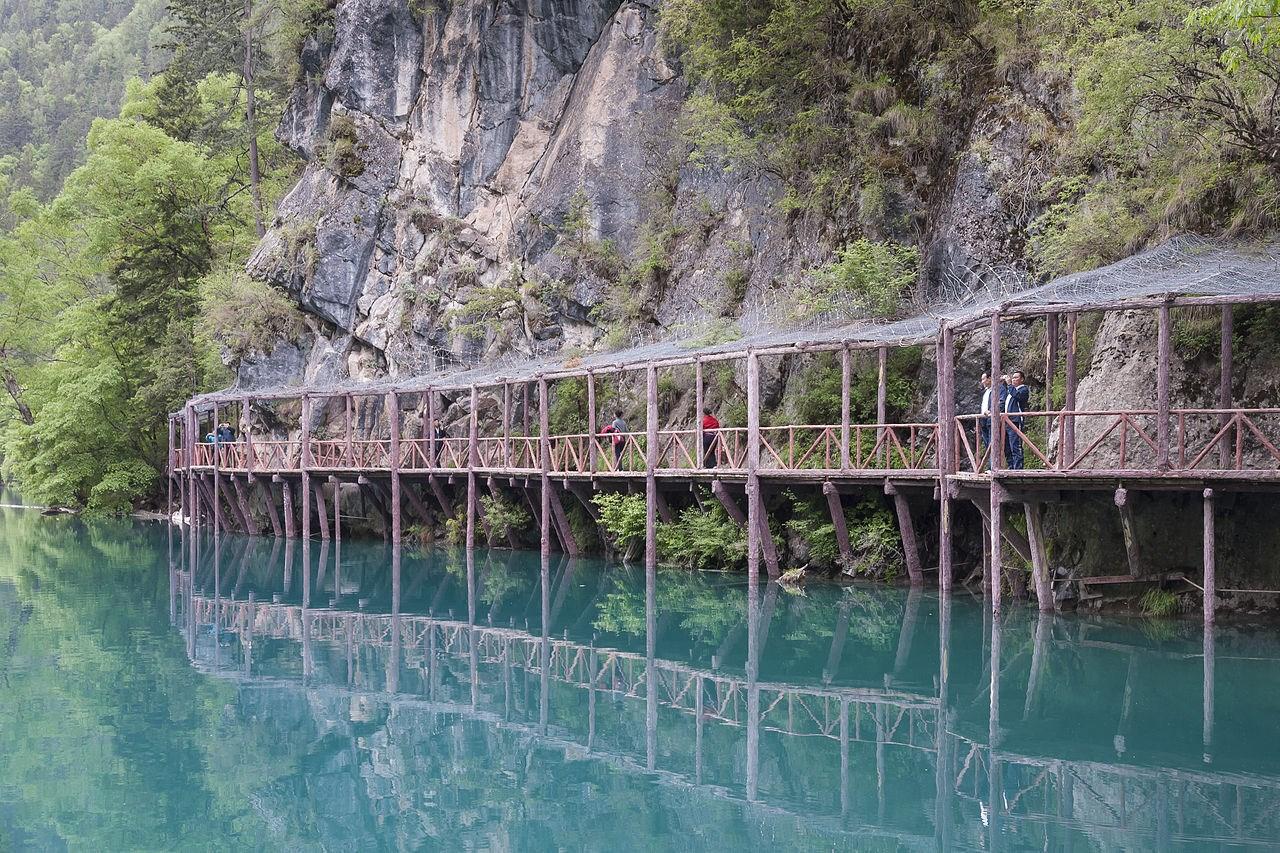
我觉得一个地方旅游客越少,风景越漂亮,所以到了我们下一终点的时候,看到人烟 稀少的景况,我们很兴奋。我们从九寨沟坐了一辆公车,八个小时以后, 到了位于在西藏的边境的郎木寺。这农村又小又常冷,可是却即刻使我爱 上它了!在这个迷人的小村,人们都盯着我们,生怕我们是外星人似的, 这是那么不一样的文化体验。我们在郎木寺不但吃了很好吃的牦牛汉堡, 而且征途了山区,骑马了!除了牦牛的体验,我们也看过了土拨鼠,还有 飞鹰!
作为我们十分了不起的旅行的结尾,那夜我们在农村人的小家待了,而且还帮了他们照顾动物,真是一个难得的生 活的经历。

最后我必须说,如果你去中国,我觉得四川是一个你一定要去的地方,但是记得不要跟旅行团去!

18 THEUOBLINGUIST.CO.UK
真是一个難得
的生活的经历!”
ASA ISOMOLORUKO Mimi Umaeno Nkposong lo ko

Awon Yoruba ko fi owo yepere mu eto isomoloruko nitori pe won ka oruko si nkan Pataki.
Oruko omo ni ijanu omo; nitori naa, oruko wa lati maa fida, ara eni mo. Awon Yoruba gbagbo pe oruko a maa ro eniyan. Bi oruko omo ba tiri ni yoo se ma hu’wa, nitori na ni won se ma n farabale wo oruko ti won yoo so omo.

Ki o to di ojo isomoloruko, orisirisi oruko ni a maa n pe omo titun ti a sese bi. Awon miran a maa pe ni alejo nitori pe won kaa si alejo to wa ba ni, sugbon won ko kaa si alejo ti yoo tun pada, bi ko se eyiti yoo maa ba ni gbe lo titi.
Ni ibere, ojo kefe ni a n so omo loruko iba je omo okunrin tabi obinrin. Sugbon awon iran tabi idile Pataki paapaa ni aarin eya Yoruba oyo ni eto isomoloruko to yato si ti ojo mefa. Bi apeere, ojo keje ni a n so omobinrin loruko, ojo kesan-an ni ti omokunrin. Sugbon ti awon mejeeji ba je okunrin, ojo kesanan ni a o so won loruko. laye ode oni, iyi pada, ti deba ojo isomoloruko. Ki gbogbo re le dogba, ojo kejo ni a n so omo loruko ni ibi pupo ni ile Yoruba,
Idile kookan loni oro kan wa ti o wopo ni bi pipo ni ile Yoruba. Eyi ni kiko- omo – jade ni ojo isomoloruko.
Ni ojo ikomojade, awon ebi ati ore yoo pejo si waju ile nibi ti osooro ojo maa n da sile lati ori onile won yoo gbe iho keekeeke meji siwaju ile naa. Won yoo maa da omi tutu sori orile bi iya ikoko naa ti n gbe omo re jadebo. Ekan omi tutu yoo kan sara omo. Nigba miiran, eemeje ni won yoo fi ara omo naa gbe ekan enu ona bi won ti n gbe e wole, ti won gbe e jade bi o baje obinrin. Bi o ba je okunrin, eemesan an. Bi o ba je ibeji, eemejo.
Awon ohun ti a fi n somoloruko ni wonyi; iru, iyo, epo pupa, omi tutu, eja aro, eku ti a ya si wewe, obi abata, orogbo, ataare, oyin, oti ati owo.
Omi tutu:- Omi niyi o, ki o mu pe . Ki o ma gbodi lara re o.

Iru, iyo, epo:- ki o maa ba te e. bi iyo tije ohun Pataki ti I mu obe dun, bee ni ki aye re se Pataki Obi: - ki o bi ibi danu lori omo tuntun.



















































































































































































































































 By Maria Aslani
By Maria Aslani




























 por Connor Haines por James Hill
por Connor Haines por James Hill




























































